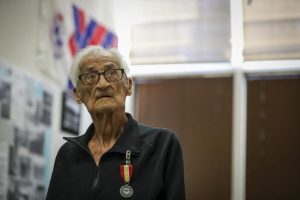The opinions expressed in this op-ed are those of the author and do not necessarily reflect the views of Military.com. If you would like to submit your own commentary, please send your article to opinions@military.com for consideration.
Walk into the headquarters of any operational Army unit on any Army base in the United States, and you’ll eventually bump into something claiming to perform a groundbreaking effort of “innovation.”
The members of the Innovation Task Force, the innovation cell/hub/bureau, will eagerly show you how they are “implementing new ideas,” “applying disruptive tech,” and “focusing on new capabilities for the warfighter.” You may even run into the innovation officer, who will happily describe how innovation efforts tie with commanders at all echelons. These folks will earnestly tell you that all this innovation is “creating a culture of innovation.”
Ingenuity has become orthodoxy across the operational Army. This is laudable, and every military leader should consider applying new ideas and cutting-edge tech to all operations. But this furious push to force innovation on operational and tactical units through a proliferation of disconnected efforts doesn’t make them faster, more efficient, or more capable in combat. Quite the opposite: It often slows units down and depletes resources from their combat mission.
The U.S. military is in innovation overload.
“Innovation” is applied so exhaustively to so many different endeavors that the term no longer holds any meaning. Every military command seems to have its innovation show pony — the cell, team, group or bureau working on new technology and techniques. But these local cells are untethered from the broader institution with the capability and resources to bring these ideas into the force.
To some extent, that’s the point of these organizations: By breaking out from the gargantuan military bureaucracy, military units can absorb ideas from the tactical level and move faster. However, this also disconnects these elements from the resourcing and oversight of Congress.
Much of this innovation is all presentation with little purpose. Commanders build out their legacies on the show but, after the credits roll, nothing moves into research, development, procurement or implementation for the force. Worse, these efforts come primarily at the expense of actual, critical missions. For example, in 2021, the Army’s XVIII Airborne Corps developed Dragon’s Lair, a soldier innovation competition. Modeled on the network television show “Shark Tank,” the program solicited new ideas from troops across the formation. Dragon’s Lair aimed to unlock the imaginative solutions developed by soldiers at the lowest levels of command, bring them to the top of the organization, and spread them throughout every platoon. The program received significant media and organizational attention, and Secretary of the Army Christine Wormuth lauded the initiative at the October 2021 AUSA convention.
However, after eight iterations and two years, not a single presented concept has made it to the troops. The U.S. Army and the XVIII Airborne Corps have yet to implement any solutions offered at Dragon’s Lair. Each winning idea eventually ran into the brick wall of Defense Department bureaucracy. Meanwhile, the program ate up considerable time and energy from a corps staff otherwise busy organizing for operations.
In operational units, innovation cells and initiatives are manned and supported by service members slotted against a traditional duty position. Without a manning billet focused on new technology, officers are double-hatted to serve this intense focus on innovation. With limited troops and time, trade-offs are made, often to the detriment of the unit’s primary mission.
Meanwhile, there are organizations codified by Congress and funded and explicitly staffed for innovation, such as AFWERX and the Army’s Software Factory. These elements develop service-level solutions and maintain informal acquisition resources for new technology. Unlike operational units, these organizations maintain mechanisms to navigate the complex acquisition pathways.
The urge to access emerging and developed tech and update and modernize military systems, operations and capabilities is essential. China retains a sizable lead over the United States in this area, and the gap is growing. This summer, the Australian Strategic Policy Institute estimated the People’s Republic of China beats the U.S. in 37 of 44 critical and emerging technologies. China outpaces the rest of the world in both research and implementation.
So, new ways of thinking are essential. Applying artificial intelligence, machine learning, unmanned systems and analytics at the tactical and operational level is critical. But without a mechanism to bridge to the DoD procurement apparatus, these efforts languish. Military units can best serve their troops by establishing clear and precise requirements that align with the DoD’s overarching goals. Commanders should then advocate for these innovations and submit these requirements through the services to the DoD for procurement and implementation.
This past June, the Government Accountability Office released a report unsubtly titled “DoD Needs Department-Wide Guidance to Inform Acquisitions,” revealing that, due to a lack of specific acquisition instructions for new tech, the U.S. military routinely misses opportunities to acquire capabilities to match the People’s Republic of China’s scale and speed. Without such guidelines, disparate research and testing efforts across the services are wasted, resources are squandered, and implementation opportunities are missed.
The hedge strategy advocated by Shield Capital partner and former Defense Innovation Unit director Michael Brown would allow the U.S. military to cut into the PRC’s lead. This approach focuses on procurement of low-cost unmanned systems and designs to complement existing manned platforms. The DoD should accept this concept. The Pentagon should then create a dotted-line relationship from the Defense Innovation Unit to the resourced innovation organizations for each service (AFWERX, SpaceWERX, NavalX, Marine Innovation Unit and Army Futures Command). A collaborative connection among and between those organizations would aid progress and prevent redundancy. Each service should also establish a mechanism to access good ideas from across each service formation in the model of AFWERX’s Spark Tank.
All ad-hoc innovation structures among operational units should be dissolved. Top-level organizations such as the Defense Innovation Unit and Army Software Factory should send out new technologies to these same operational units for testing and improvement by troops in real-world environments. These operational units should be serving as a testing ground for the Defense Department by subjecting technology to extreme conditions and diverse threats.
Stretching the force thin to demonstrate a focus on innovation may build out the legacies of those commanders and advance the careers of individual generals, but within the organization, it only consumes readiness.
In the past five years, the Air Force Research Laboratory, the Marine Corps Warfighting Laboratory and the Strategic Capabilities Office developed methods to transition research and development to programs of record, the contracting mechanism that allows technology to be bought and distributed in the services. Warfighting units should feed these organizations with requirements that match their mission demands rather than waste time on internal-focused programs that pursue bespoke requirements without connection to the broader procurement process.
Shut down the task forces, boards, bureaus and cells, and instead focus on bringing private-sector applications to warfighters. To harness the potential of new technology and new ideas, the military must shift from focusing on innovation at the unit level to feeding requirements to the services for procurement.
It’s time to close the curtain on the innovation show.
— Joe Buccino is a retired Army colonel who served as the communications director for U.S. Central Command from 2021 until July 2023. He now serves as an adviser to Grave of Bulkington Media.
Story Continues
Please rate this CIBA article
Vote






